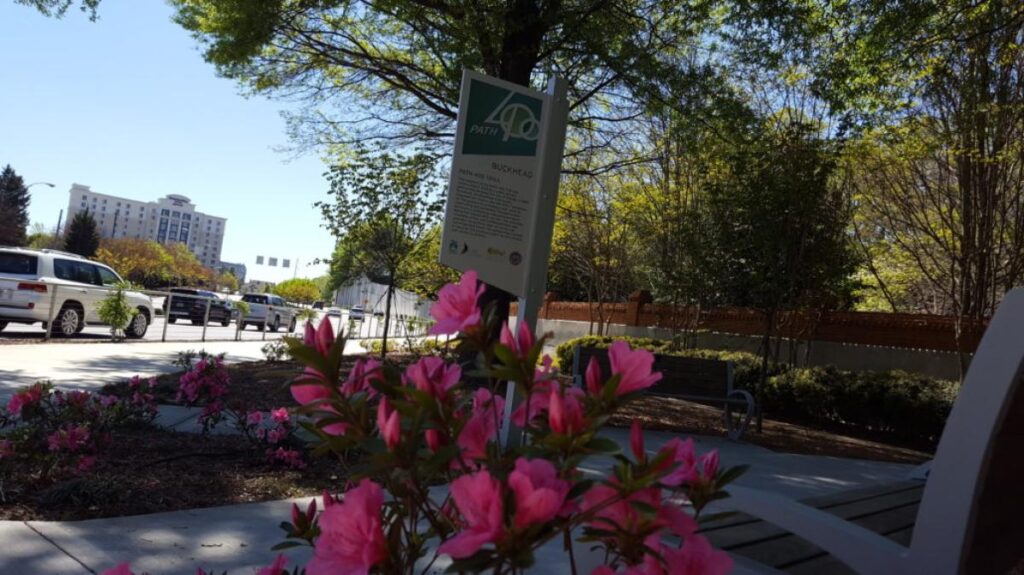Photo courtesy of PATH400
The paved trail will primarily be built within the Georgia Department of Transportation (GDOT) right-of-way along Ga. 400.
Construction to extend the PATH400 multi-use trail in Georgia is scheduled to begin in 2024 after the Sandy Springs City Council approved two agreements with Atlanta on Jan. 2.
The extension of the multi-use trail, which runs from Loridans Drive in Atlanta to Johnson Ferry Road in Sandy Springs, requires cooperation from both cities to complete.
As construction at Ga. Highway 400 and Interstate 285 wraps up, work to extend the existing 5.1-mi. path to the interchange can begin.
The paved trail will primarily be built within the Georgia Department of Transportation (GDOT) right-of-way along Ga. 400, which has served as a staging ground for equipment used for the upgraded interchange.
The extension will connect Sandy Springs residents to Buckhead and also will provide access to proposed paths on Peachtree Dunwoody Road and Mount Vernon Highway.
Sandy Springs and Fulton County voters approved the PATH400 project in the Transportation Special Purpose Local Option Sales Tax referendums passed in 2016 and renewed in 2021, according to the city’s website.
At the Jan. 2 meeting, the Sandy Springs City Council first approved an amendment to the original May 2019 agreement with Atlanta for the design of the multi-use trail.
The earlier agreement between the two cities hit a snag when a Sandy Springs contractor requested additional funds for final design in January 2023, reported Appen Media in Alpharetta, Ga.
According to the project framework agreement, the PATH400 extension requires 20 percent of local funding from each municipality to match the 80 percent of federal funding from GDOT.
While GDOT plays a key role in the project, engineers with Heath & Lineback Engineers in Marietta also provide design and construction services for the Sandy Springs portion of the PATH400 extension.
The new amendment calls for Atlanta to reimburse Sandy Springs $17,457 for additional cost sharing related to preliminary engineering.
Atlanta’s City Council approved the amendment in November, after which it released a statement reading, “After completion of the preliminary engineering, the City of Atlanta will take on the responsibility for constructing [its] portion of the trail.”
According to a 2019 PATH400 trail-extension presentation to Sandy Springs residents, the total cost of the project is about $23.3 million. Sandy Springs’ portion is about $19.2 million and requires a 20 percent local match of another $3.8 million.
Each City to Share in Cost of Nancy Creek Bridge
The PATH400 project pact is a bit complicated, Appen Media noted.
Primarily, the second agreement approved by Sandy Springs on Jan. 2 is related to cost-sharing for construction of the PATH400 extension. Each city will construct the portion of the project within its city limits; however, Atlanta’s and Sandy Springs’s borders meet at Nancy Creek Bridge on Ga. 400.
The construction cost of the entire bridge for the PATH400 trail-extension project will be included in the Sandy Springs portion. The estimated cost for the part of the bridge located within Atlanta is just under $2 million.
As a result of the agreement, Atlanta will reimburse Sandy Springs for the 20 percent local match to build the bridge, which is likely to total about $393,000, but no more than $400,000.
The federal share of funding for the new bridge, about $1.5 million, will be reimbursed by GDOT through the project framework agreement.
Read the full article here

